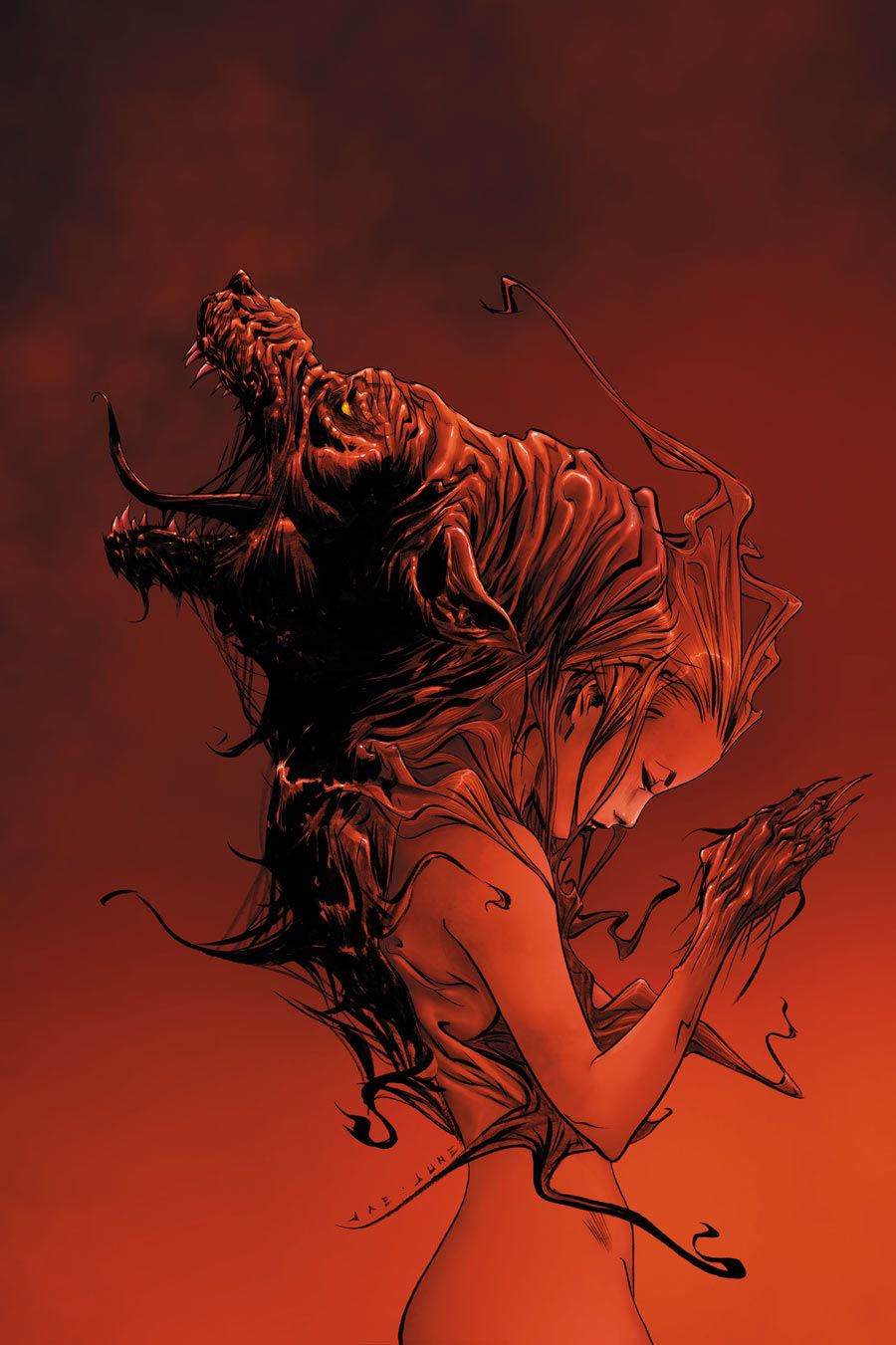After his life is torn apart, Dillon dedicates his life to hunting down the Wolf -- a lycanthropic entity that, for all appearances, jumps from host to host at random every full moon. Left with grief and a nasty scar, Dillon forgoes the comforts of love and home offered to him by a fellow victim in order to put an end the Wolf and all its havoc. As an establishing issue, Cullen Bunn and Jeremy Haun's "Wolf Moon" #1 doesn't do much to separate itself from the plethora of other werewolf tales; though a solid homage, the issue plays too close to the same old rules for too long to really hook readers into the story.
Clearly borrowing from existing horror culture, "Wolf Moon" #1 goes by the book with a cold open, horrifying transformation sequence, gore and a cunning, if soulless, beast at its core. Further, it taps into familiar lycanthropy lore, complete with full moons and silver bullets. While this certainly helps to orient the reader within the story and pays homage to werewolf legend as it exists in pop culture, it hardly offers anything new -- until, arguably, the last page or so, but by then even the twist is a little underwhelming; it suffers from offering too little too late, withholding the most fascinating aspect so long that the first two-thirds of the book simply aren't as engaging as they have the potential to be. With his excellent and inventive books like "The Empty Man" running alongside it, "Wolf Moon" feels like a step too far to the safe side for a creator like Bunn.
The virus-like nature of lycanthropy here is definitely the most fascinating aspect of the story; its apparent randomness adds depth to the horror tone and the immersive helplessness of the victims. The settings -- in small, rural towns and suburbs -- relay a feeling of Anywhere, U.S.A. that brings the action of the story closer to home. Likewise, letterer Travis Lanham's journal-like narration boxes and his underlining of key words contributes to the overall intimate, personal essence of the story. Though stuffed with a lot of action, the plot carries forward with a steady pace that is held in place by the calm, informative narration.
For all the carnage and mayhem caused by the Wolf, Haun brings a rather sterile style to the book. His inks and shading tend to stay light, particularly in the facial details, so that his figures and backdrops tend to be clean overall. Additionally, during the big chaotic scene at the diner, his figures fail to show the abject terror of the events at hand, with facial expressions that just read as far too even-keeled. Nevertheless, he isn't afraid to get a little gorey, unabashedly highlighting the body horror and blood left in the Wolf's trial. His sound effects for such violence -- including one particularly compelling scene where three hunters listen to their dogs die -- are worked subtly into the background but create ambiance with a light touch. Further, the Wolf in all his ferocity comes across well with a huge, hulking figure and big, empty eyes that effectively convey its cruel intent. As usual, colorist Lee Loughridge compliments the book with a largely dim, blue-tinted palette for the nighttime attacks and a wonderfully sick green for Kyle's public restroom transformation scene, concluding the darkness with a lovely dawn that casts all-too-cheerful a light on Dillon's dark mood.
In "Wolf Moon" #1, Bunn and Haun play it safe with a new werewolf legend that feels... well, old. With an interesting concept at its heart and a promising conclusion, it contains a world of potential that it can't quite reach in its debut issue. Strong but trite, "Wolf Moon" squeezes itself into a long tradition of lycanthropy mythology without ruffling any feathers.

